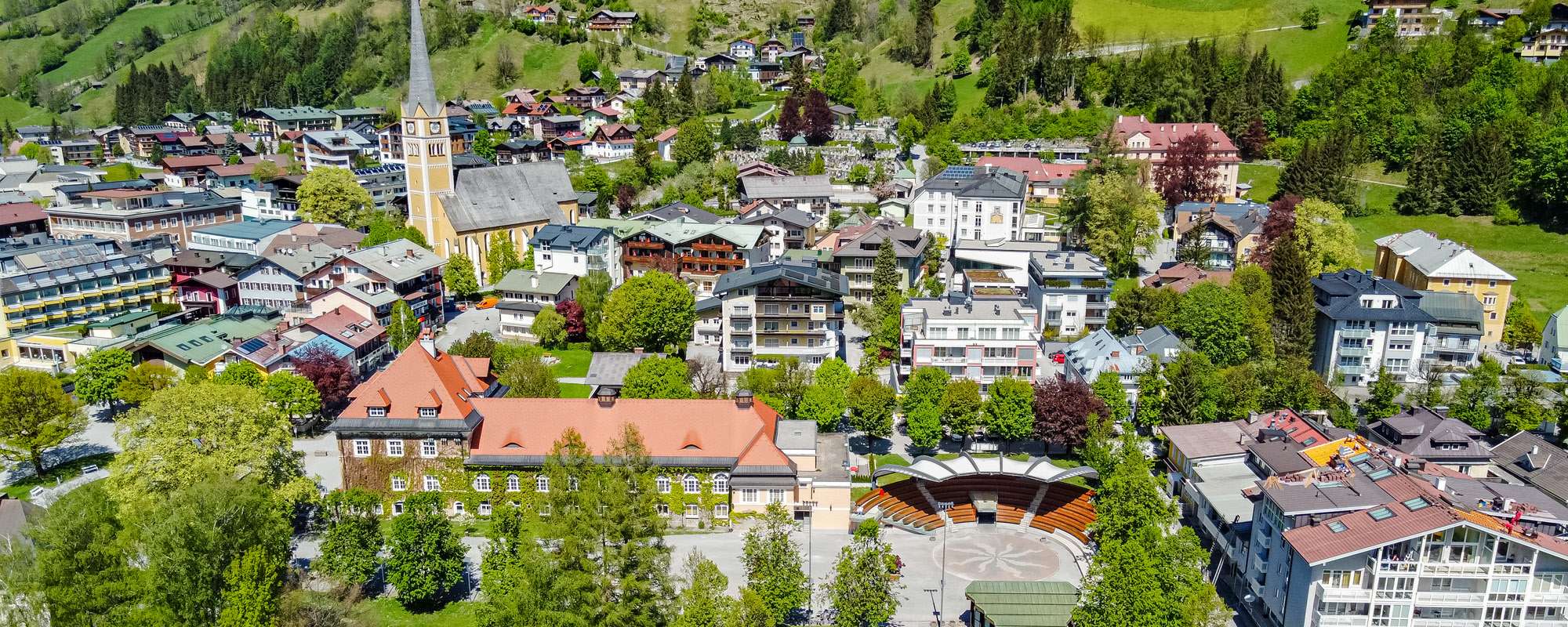
Bad Hofgastein
Bad Hofgastein is an Austrian market town with about 6,500 inhabitants and is located in the Salzburg region in the district of St. Johann im Pongau, in the Gastein Valley.
It is a health resort and winter sports resort with a long tradition. Since 2003, Bad Hofgastein has been part of the district of St. Johann im Pongau - until then the village belonged to the district of Gastein.
The sprawling municipality area consists of Bad Hofgastein, Harbach, Heißingfelding, Vorderschneeberg and Wieden and comprises 10 villages (Anger, Bad Hofgastein, Breitenberg, Gadaunern, Harbach, Heißingfelding, Laderding, Vorderschneeberg, Weinetsberg, Wieden).
The story of Bad Hofgastein
The history of Bad Hofgastein began in Roman times, for here was the centre of the silver and gold mining - on Radhausberg, near Angertal and Pochkar. Bad Hofgastein is located in the widest part of the valley, this is also the reason that this "settlement" also became the chief town of Gastein and was also the first parish in the valley. That is the reason why the town was named in court as Gastein, later it was Hofgastein. Later, in the Middle Ages, Hofgastein was the centre of commodity exchanges between Italy and Austria and Germany over the two Gastein Tauern. On the paths already constructed by the Romans on the Korntauern, tropical fruits, wine and other products were transported through this mountain valley to be exchanged in return for gold and silver. The market route was approved in the 13th century. The parish church in Bad Hofgastein was designed in 894 as a small church, and didn't receive today's Gothic appearance until the 15th century.
The dramatic decline ushered the decline of gold prices and natural disasters. The outbreak of the plague in 1574, as well as the social and religious conflicts during and after the Thirty Years' War did the rest, resulting in a total decline in the place. A second blossoming reached Hofgastein as a spa, after the abolition of the Archdiocese of Salzburg and the connection to Austria. Emperor Francis I in 1820 gave rights to the thermal water of Bad Gastein. Thereafter it was possible to transport the coveted water from Bad Gastein in an approximately 8km long thermal water system. Since 1936, the village has been officially named Bad Hofgastein.
Tourism in Bad Hofgastein
And this story allowed the Bad Hofgastein tourist population to grow: So it was possible that it has developed into an internationally known spa and winter sports resort with about 145,000 visitors per year with spa, conference and event facilities, as well as a thriving pedestrian street with shops, hotels, cafes and restaurants. Then there is the 32.000m2 large Alpine Spa Gastein - Europe's most modern health and wellness oasis with alpine spa and the renowned GasteinHeilstollen (Radonbalneologie). The second mainstay and the perfect complement to the theme of wellness & spa: The common ski resorts of Bad Hofgastein and Bad Gastein! This has made it possible to position the ski regions of Schloßalm-Angertal-Stubnerkogel (Gastein valley) as part of the Ski Amadé area. The Gastein Valley alone provides over 80km of pistes with a total of 5 cable cars, 7 chairlifts and 7 ski lifts - so the Amadé ski area has over 900 km to take skiing to another dimension!
The ski resort extends from Bad Hofgastein to Schloßalm (2,050 m) and the Hohe Scharte (2300m above sea level) underneath the Türchlwand and from there to the Angertal at 1,175 m and the Stubnerkogel (2250 m above sea level) above Bad Gastein. In the village there are a further 120 farms with 7200 acres of alpine meadows and 28 pastures, which ensures that, for recreation and tourism, it is stays such an important landscape and one of the finest in Salzburg!
